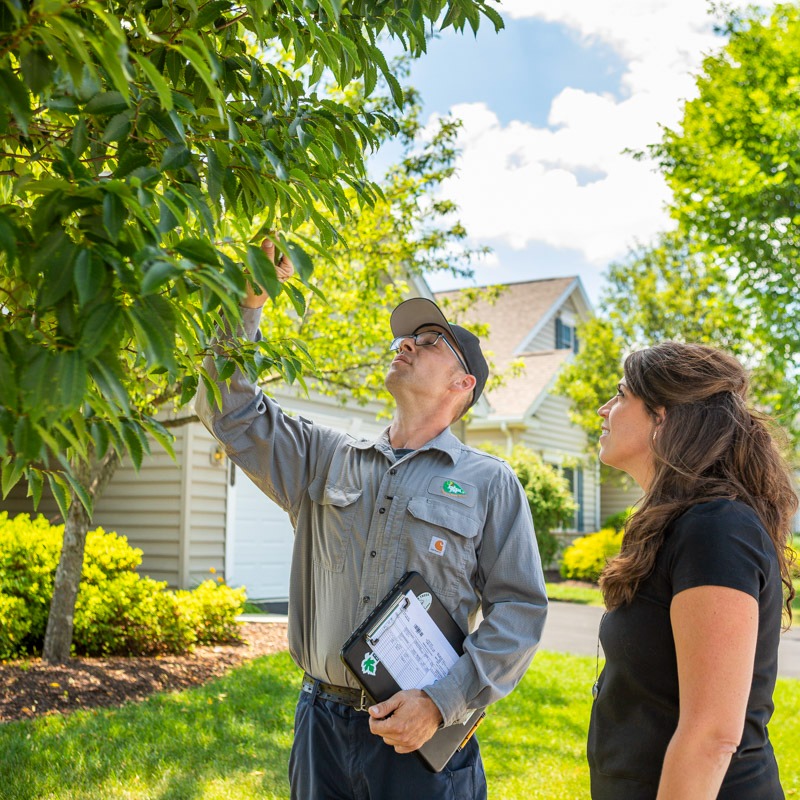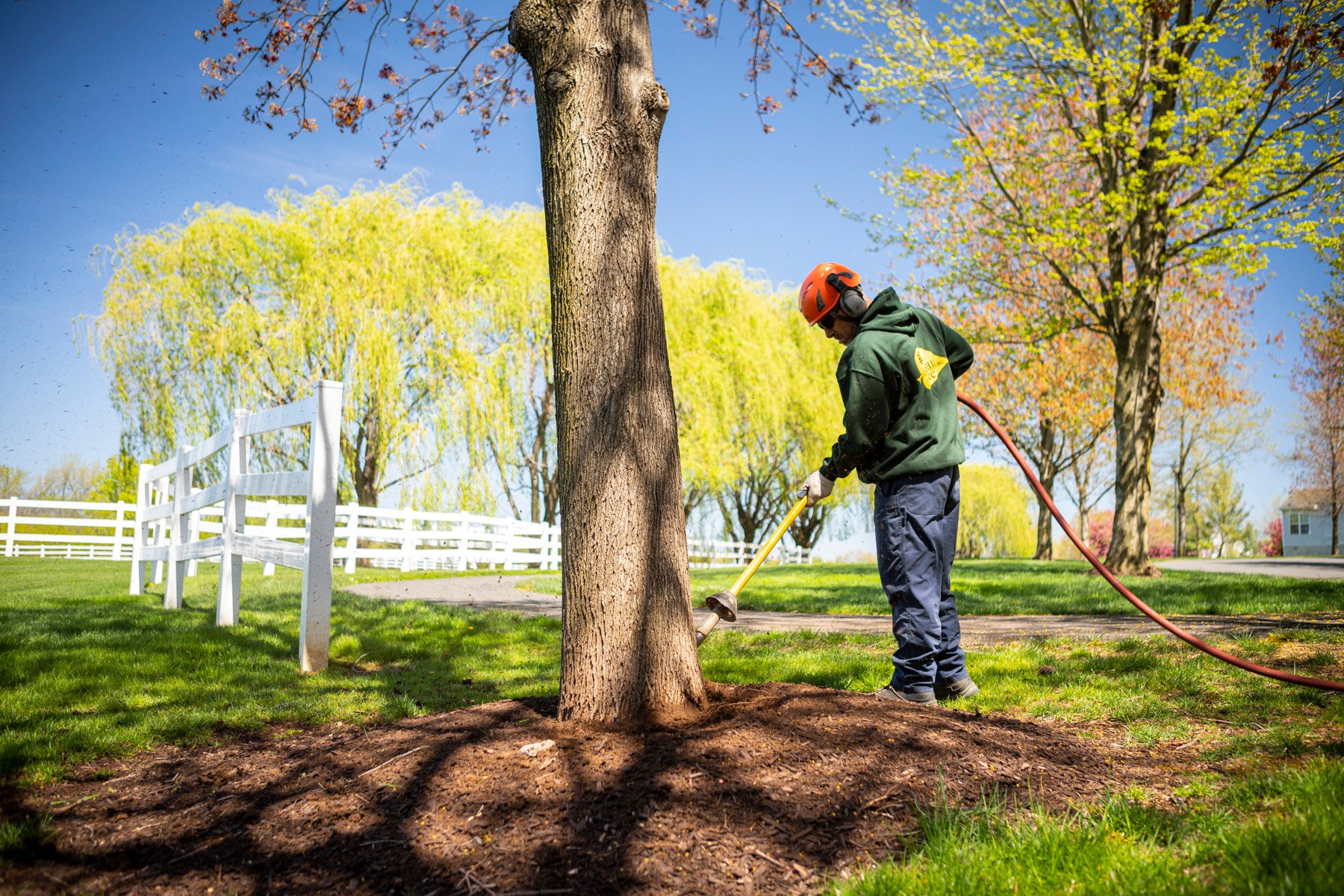If you’re like a lot of homeowners, we know that you really value your property’s trees. For that reason, we never want to see problems like damaged tree bark cause more significant issues.
But accidents can happen.
Whether your tree was hit with heavy machinery, a mower, a vehicle, or something else, when the bark becomes damaged, it can harm the entire tree. Sometimes, tree bark even becomes damaged due to a storm.
Whatever the case may be, you want to make sure that you deal with this issue properly. In this article, we’ll talk about how to address young tree bark damage.
Repairing Tree Bark Damage
Even if it doesn’t seem that serious on the surface, tree bark damage can lead to greater health concerns for the tree.
A tree’s bark is much like a human’s skin. It’s an important protective barrier to the internal structures.
The biggest problem with damaged tree bark is when the wounds reach the vascular tissue and it impairs the tree’s ability to take in nutrients and water. When a wound occurs, it also increases the probability of decay-causing fungi entering the tree.
This can be a slippery slope as a decaying wound might also be an invitation for pests. Pest and disease problems become much more of a risk when a tree is already struggling.
Fortunately, trees do have a natural defense mechanism. A tree will naturally begin to form a barrier to help isolate the wound by walling it off. This process is called compartmentalization.

This is the same process that makes strategic tree pruning successful instead of harmful to the tree (assuming the right amount is pruned off). If unskilled tree care workers prune too much of a tree, that can also lead to significant damage.
However, if the wound is too severe (or too large), sometimes it can be hard for a tree to recover.
Young trees can sometimes have an easier time recovering from damage than an old tree. But there are various factors that have an impact. The tree’s size, age, species, and the amount of damage all come into play.
If you find damaged tree bark it helps to have the tree evaluated by a tree care professional.
One thing that you’ll want to avoid is using tree wrap for damaged bark. This is no longer considered a best practice. In fact, wrapping or spraying bark wounds on the outer layer can lock in unwanted moisture to the damaged area promoting decay. It also keeps any diseases that may have been introduced during damage alive and well.
Instead, we recommend a procedure called bark tracing. This is where you take a razor knife and carefully trace around the damaged area, taking it back to the undamaged bark that is completely secured to the trunk or branch of the tree. This allows the tree to heal itself over time, using the CODIT process (compartmentalization of decay in trees).
You’ll also want to make sure that your damaged tree gets some proper “TLC.” That includes watering it correctly. A damaged tree that also ends up drought-stressed is going to have a much harder time recovering. A professional can also provide tree fertilization to provide a boost of nutrients that will help with healing.
Of course, it’s important to note that if the tree is not structurally sound because of a severe wound, removal might be necessary. This will prevent the tree from growing into a hazard later on in its life.
This is why it’s important for a tree care professional to make a proper assessment.
Will My Tree Recover From Damaged Tree Bark?
As you might have guessed, this is generally a case-by-case situation.
A tree care professional can help give you an idea as to whether a tree will recover from damaged tree bark. A general rule of thumb is that if the damage makes up no more than 25 percent of the tree, it will survive. But this is just an estimation.
Sometimes a tree with worse damage will still recover because it was in otherwise healthy shape.
And sometimes a tree with less damage might not recover because there were other issues already going on.
A Certified Arborist can perform a tree assessment and help provide the best course of action for your tree.
Preventing Damaged Tree Bark in the First Place
Obviously, a preventative approach is always optimal. You want to try and avoid damage in the first place.
One of the best ways to do this is by creating a mulch ring around your trees.
Mulching around a tree has other benefits like protecting its roots and helping the tree to retain water. But it also creates a visual and physical barrier that reduces accidents with mowers and other equipment.

Whether you or someone else mows your lawn, you know that when the grass grows right up to the tree, it’s hard to avoid bumping into it sometimes. A mulch ring will help prevent this.
You also want to make sure that your trees are well-cared for and healthy. This includes proper watering and potentially even investing in a plant health care program. Plant health care combines disease and pest treatments with proper tree fertilization to help preserve your trees’ health.
In general, a healthy tree will better stand up to problems than one which is already struggling.
Making Smart Choices with General Tree Care
Understanding how to care for your trees and address various problems that might occur can be complicated. But you don’t have to do this on your own, when you work with a tree care company, they can take over all of your tree care needs.
After all, tree bark damage is just one of many problems that can occur. You want to make sure that you’re making all of the best decisions to expand the lifespan of your trees.
As you search for tree care, be sure to look for a company that has long-term expertise so that you can feel confident they’ve seen many problems over the years and know how to deal with them.
In addition, look for a company that has Certified Arborists on staff. These highly trained individuals will be able to understand your tree’s needs and work with you to preserve its longevity.
At the end of the day, your wise choice in selecting an experienced tree service will allow you to cast your fears aside. With a true tree care expert handling your trees, there simply won’t be any reason to worry.
With the right care for your trees, you’ll gain valuable peace of mind. If you’re interested in having your trees inspected and their health assured, contact us for a free consultation or give us a call at 833-JTE-TREE.




